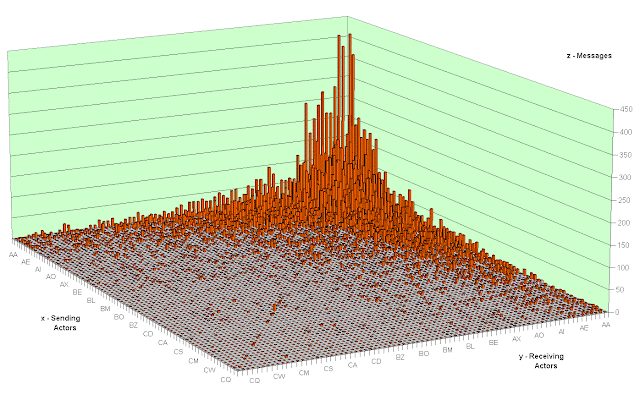Last time I mentioned that Social Network Analysis (SNA) was a good tool for detecting cohesive subgroups within the online social networks created by the interactions of newsgroup participants over a period of time. What I didn't mention was that, once the data is imported into SNA software, there is a whole family of models that can be applied to this task.
In my search for VCoPs, I decided to use Borgatti and Everett's (1999) continuous core-periphery model. This accomplished two related objectives. For one thing, I knew that CoPs often adopt a core-periphery structure (Wenger 1998), so I figured zeroing in on newsgroups already displaying such a structure would be a good idea. In addition, the core subgroup of such a structure is a cohesive subgroup in its own right, because core members have strong interaction between them.
This is easier to see in the interaction plot shown below. It plots messages exchanged during one year between members of a newsgroup I'll call MEDTRAN. Furthermore, in the plot, participants have been sorted in descending order of coreness. Thus, the ones closest to the origin have the highest coreness scores. The plot shows quite vividly that core members, i.e. those with the highest coreness scores, exchange lots of messages among themselves. This makes the core, a high density region of the social network, in other words, a cohesive subgroup.
Borgatti, S., & Everett, M. (1999). Models of core/periphery structures. Social Networks, 21, 375-395.
Wenger, E. (1998). Communities of practice: learning, meaning, and identity. Cambridge: Cambridge University Press.

No comments:
Post a Comment